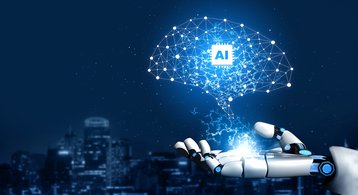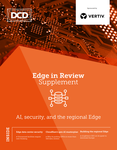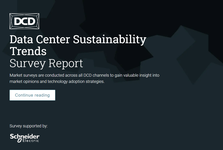The popularity of Artificial Intelligence (AI) is growing rapidly around the world, with its usage ranging from improving business efficiency to simply generating images for fun.
However, this comes at a cost to the planet as AI is predominantly a carbon-heavy monster with the materials required for producing components, particularly Graphics Processing Units (GPUs), the powering, and the cooling - lots of cooling - all significantly contributing to carbon emissions.
As AI evolves, it is crucial to find a sustainable solution, starting with quick wins.
The Growth of AI
According to combined research from IEA and Bloomberg, the AI industry’s predicted growth will reach $1.34 trillion in 2030, and based on previous experience in the Media & Broadcast industries, I would not be surprised to see AI grow 30 percent in the next three to five years.
However, a significant factor is left out when estimating the growth of AI - and that is the carbon costs of training.
Carbon Costs
AI training is by far the most power and cooling-hungry part of AI. Research found that training a single AI model can emit over 626,000 pounds of carbon dioxide, which is roughly five times the lifetime carbon emissions emitted from an average passenger car, and the more powerful the AI model, the more energy it needs.
The AI training, review, and retraining cycle also occurs multiple times before the final model is ready for commercialization; meaning the carbon dioxide impact of creating a model will hit home well before the revenue above.
Another byproduct of AI training is object storage. This requires libraries of images, videos, audio, or other unstructured data to train AI models. A more carbon-efficient solution must be found for storage, particularly addressing duplication problems.
A data center typically duplicates all stored content to meet its Disaster Recovery (DR) requirements, the consumer chooses to duplicate the content into another storage provider for their DR, and this goes on. The client will also most likely have the same content in multiple formats causing further duplication. Currently, only 20 percent of the world’s storage is being used, but to be optimum, that figure should approximately be 80 percent.
Reaping the Benefits
Many organizations struggle to source hardware, particularly GPUs, which have a significant carbon impact in their construction. Precious minerals are mined, and components are created and assembled in multiple different countries before reaching their final manufacturer.
The standard data center model, which accounts for 2.5 percent to 3.7 percent of global greenhouse gas emissions, also does not help this situation.
In turn, these actions must be taken to address the issue:
1) Reduce the volume of components being created for AI
2) Ensure that the GPUs we have are being utilized as much as possible
3) Minimize the content requiring AI processing in the first place
The solution to the first two of these is sharing. The standard ownership and data center model is currently not designed to allow us to share easily; however, there are companies out there that can offer a new pattern for Tie I-III data centers. Any unused capacity can be offered up to their networks meaning that those unused GPUs offered are stranded as little as possible, and that unused storage capacity is utilized as much as possible.
Minimizing the number of duplicate copies of the original assets is a crucial step too, rather than targeting the storage itself.
Data centers can therefore become both the supplier and consumer. Their unused storage/GPUs can be offered to networks and monetized but can also leverage the distributed resources to resell to their clients.
One solution to the third issue is deduplicating the frames and audio that are sent to AI, which can reduce the load by an average of 75 percent. This increase in granularity of data (extracting every frame) while reducing both the cost and carbon of AI is a clear win-win.
Carbon Reporting
Interestingly, certain major hyperscalers have recently disabled the carbon calculators for their AI products, citing that they are carbon offsetting, but this is not the same as using renewable energy and preventing damage in the first place.
Immersion Cooling
There has also been a shift toward immersion cooling and the benefits it brings.
Recent studies have shown that immersion cooling reduced the power related to cooling the rack by 30 percent, and the cooling of the data center by another 30 percent. If correct, these large reductions in power consumption can bode well for the reduction in fossil fuel-based power.
However, immersion cooling is still heating the planet, and transparent reporting from data centers is therefore needed in order to aid the adoption of this approach to measure the impact.
Closing Thoughts
There are other solutions out there to minimize the impact of AI and its secondary impacts (such as storage), however, these often result in a choice between the environment, saving cost, or the quality of the solution.
Any technology that offers both a cost and carbon saving, either with the same or better quality is an easy decision for the CFO and that’s where businesses should start.
The road ahead should see carbon calculators restored, even for services with carbon offsetting; reporting on the temperature impact of immersion cooling made visible; and industry collaboration to set accords rather than waiting to be legislated if we want to help save our planet.








